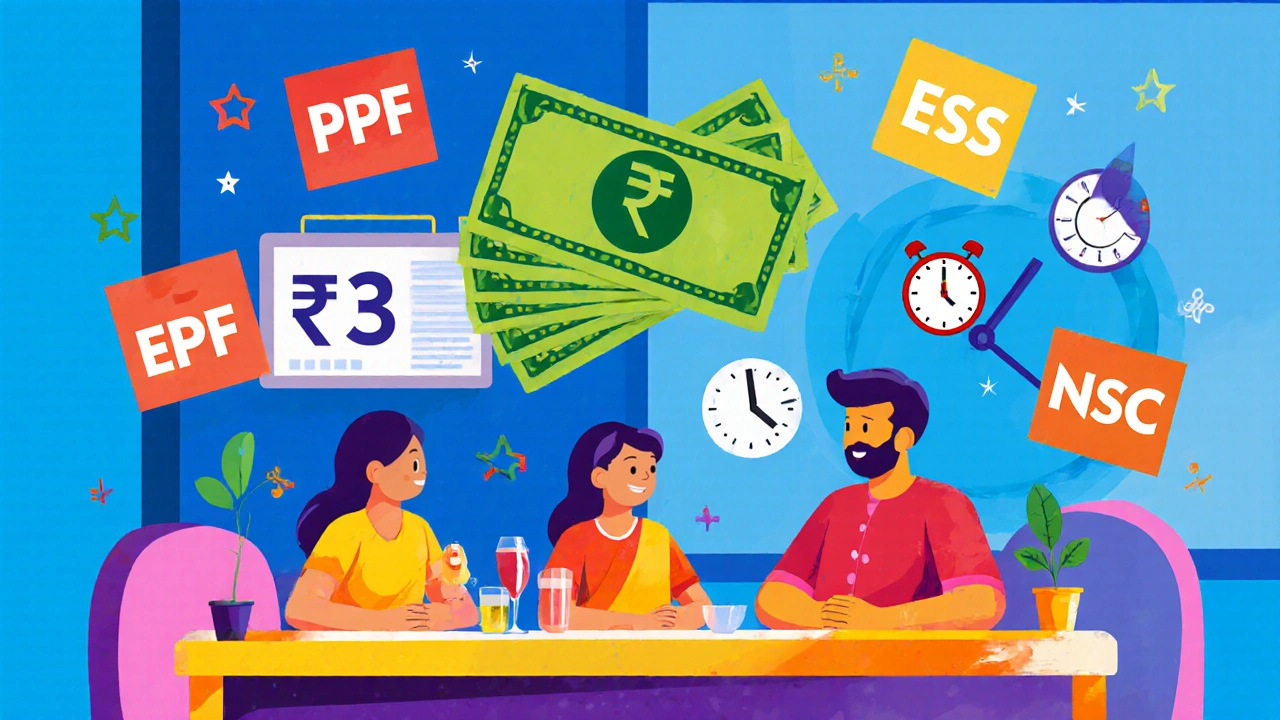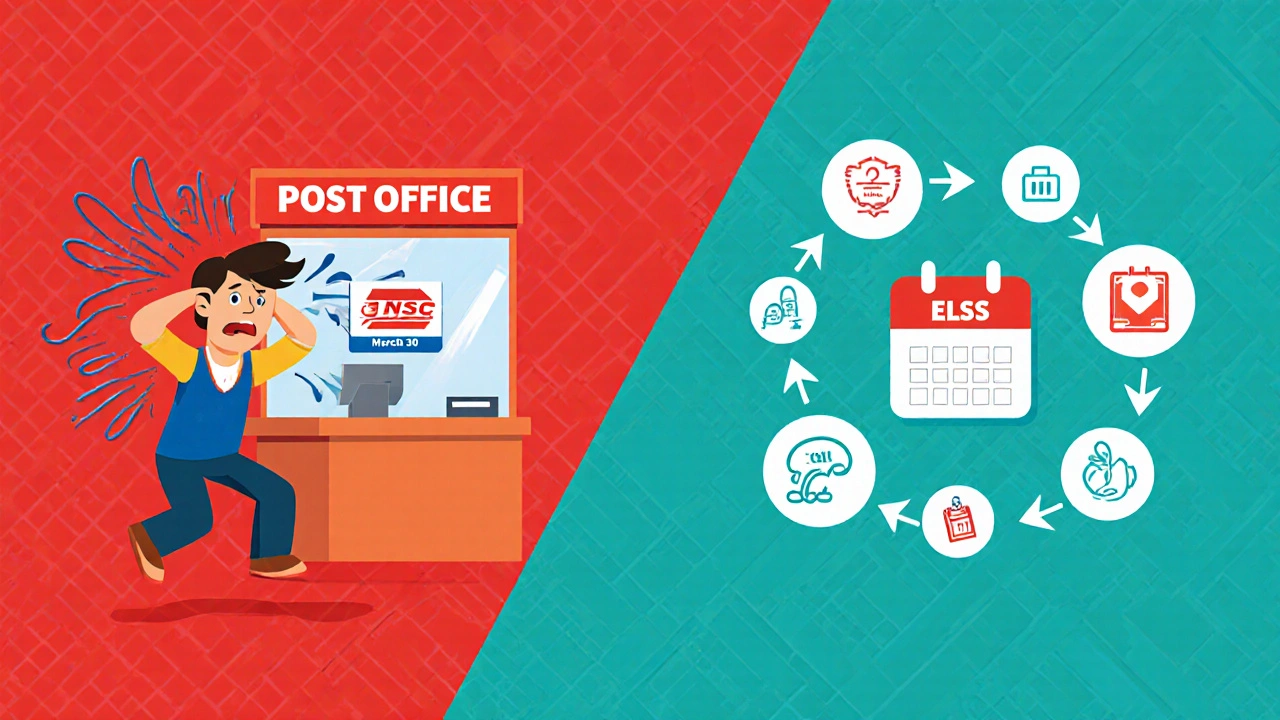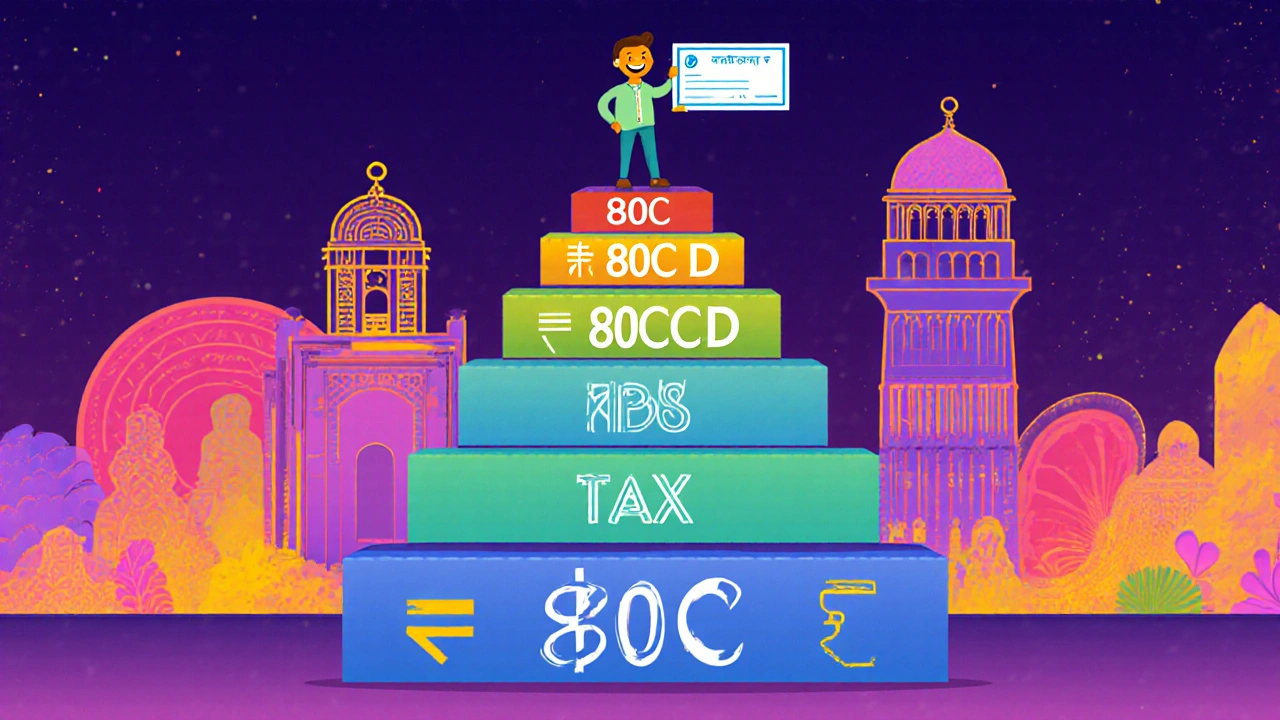Section 80C Deduction in India Explained: Maximize Tax Savings up to ₹1.5 Lakh
 Nov, 14 2025
Nov, 14 2025
Every year, millions of salaried professionals in India miss out on saving thousands of rupees in taxes - not because they don’t earn enough, but because they don’t know how to use Section 80C properly. The truth? You can legally reduce your taxable income by up to ₹1.5 lakh every year. That’s not a trick. It’s the law. And if you’re not taking full advantage of it, you’re giving the government more than you owe.
What Exactly Is Section 80C?
Section 80C is a part of India’s Income Tax Act that lets you claim deductions on certain investments and expenses. The maximum deduction you can claim under this section is ₹1.5 lakh per financial year. This amount gets subtracted from your total income before tax is calculated. So if you earn ₹12 lakh a year and invest ₹1.5 lakh in eligible options, your taxable income drops to ₹10.5 lakh. That could mean saving ₹46,800 in taxes if you’re in the highest slab.
It’s not about earning more. It’s about spending smarter. Section 80C gives you control over how much tax you pay - if you know where to put your money.
Eligible Investments Under Section 80C
Not every savings account or insurance policy qualifies. Only specific instruments approved by the Income Tax Department count. Here are the top 10 options that actually matter:
- Public Provident Fund (PPF): A government-backed long-term savings scheme with a 15-year lock-in. Interest is tax-free, and you can deposit up to ₹1.5 lakh annually. Returns hover around 7.1% (as of 2025).
- Employee Provident Fund (EPF): If you’re salaried, your contribution (12% of basic salary) automatically counts toward your ₹1.5 lakh limit. Employer’s contribution doesn’t.
- Life Insurance Premiums: Premiums paid for yourself, spouse, or children qualify. But only if the policy is for protection, not just savings. ULIPs are included, but only if the sum assured is at least 10 times the premium.
- Equity Linked Savings Scheme (ELSS): Mutual funds with a 3-year lock-in. These are the only tax-saving mutual funds allowed under 80C. Historically, they’ve delivered 12-15% annual returns over the last decade.
- Fixed Deposits (FDs): Five-year tax-saving FDs from banks or post offices. Interest is taxable, but the principal is deductible. Rates are around 6-7%.
- National Savings Certificate (NSC): A post office savings bond with a 5-year lock-in. Interest is reinvested and qualifies for deduction, but taxed on maturity.
- Tuition Fees: Paid for up to two children’s full-time education in India. Doesn’t cover transport, uniforms, or development fees.
- Principal Repayment on Home Loan: Only the principal portion of your EMI qualifies - not the interest. That’s covered under Section 24.
- Sukanya Samriddhi Yojana (SSY): For parents of girl children. Higher interest than PPF (around 8.2% in 2025), 21-year lock-in, fully tax-free.
- Atal Pension Yojana (APY): For unorganized sector workers. Contributions qualify if you’re under 40 and enrolled before 2025.
Important: You can mix and match these. You don’t have to pick just one. But the total across all options cannot exceed ₹1.5 lakh in a year.
What Doesn’t Count?
Many people think everything they save qualifies. It doesn’t. Here are common mistakes:
- Interest earned on PPF, NSC, or SSY - you already got the deduction on the principal. The interest is tax-free, but it doesn’t add to your 80C limit.
- Health insurance premiums - those fall under Section 80D, separate from 80C.
- Donations to charities - those are under Section 80G.
- Gold purchases or real estate down payments - unless it’s the principal repayment on a home loan, it doesn’t qualify.
- Investments made in your parents’ names - only your own investments count.
Also, if you invest in an ELSS fund in March and redeem it in April, you’re still locked in for three years. The lock-in is based on the date of investment, not the financial year.
How to Maximize Your ₹1.5 Lakh Deduction
Just throwing money into any 80C option won’t work. You need a strategy.
Step 1: Check your EPF contribution
If you earn ₹80,000/month, your EPF contribution is ₹9,600/month. That’s ₹1.15 lakh annually. That’s already 77% of your 80C limit. You only need ₹35,000 more to hit the ceiling.
Step 2: Pick high-return options for the rest
Don’t just park leftover money in FDs. ELSS funds have historically outperformed PPF and NSC by 4-6% annually over 10 years. With a 3-year lock-in, they’re the best balance of returns and tax benefit.
Step 3: Time your investments
Don’t wait until March. Spreading your investments across the year helps with cash flow and avoids last-minute panic. If you invest ₹12,500/month in ELSS, you’ll hit ₹1.5 lakh by December.
Step 4: Use SSY if you have a daughter
If you have a girl child under 10, SSY gives you 8.2% returns, tax-free growth, and full deduction. It’s better than PPF in almost every way.

Common Myths About Section 80C
Myth 1: You need to invest all ₹1.5 lakh.
No. You only invest what you can afford. Even ₹50,000 in ELSS and EPF can save you ₹15,600 in taxes. Every rupee you deduct reduces your tax burden.
Myth 2: ELSS is risky, so avoid it.
Yes, it’s market-linked. But over 3 years, volatility smooths out. Data from AMFI shows ELSS funds delivered positive returns in 9 out of the last 10 financial years. Compared to FDs, the tax efficiency is far better.
Myth 3: Once you invest, you can’t change.
You can switch funds within the same ELSS scheme. You can also stop SIPs anytime. The lock-in applies only to units bought - not to your ability to stop future investments.
How to Track Your 80C Investments
Keeping track is easy if you do it right. Here’s a simple system:
- Open a spreadsheet with columns: Investment Type, Amount, Date, Receipt No., Status (Completed/Pending).
- Update it every time you invest - don’t wait until tax season.
- Keep digital copies of all receipts, bank statements, and folio numbers.
- At year-end, total each category. Make sure the sum doesn’t exceed ₹1.5 lakh.
Most mutual fund houses and banks send annual statements. Use those to cross-check. If you’re using a tax app like ClearTax or Tax2Win, sync your investments automatically.
What Happens If You Overinvest?
If you invest ₹2 lakh but only claim ₹1.5 lakh, the extra ₹50,000 won’t be taxed. It just won’t count toward your deduction. There’s no penalty. But you lose the chance to use that money elsewhere.
Tip: Always keep a buffer. If you’re close to the limit, don’t make a final investment in March unless you’re sure you haven’t already hit ₹1.5 lakh.

Section 80C vs Other Deductions
Section 80C isn’t the only tax-saving tool. Here’s how it fits with others:
| Section | Max Deduction | Eligible Expenses | Lock-in | Best For |
|---|---|---|---|---|
| 80C | ₹1.5 lakh | EPF, ELSS, PPF, tuition, home loan principal | 3-15 years | Core tax savings |
| 80D | ₹25,000-₹75,000 | Health insurance premiums | None | Family health coverage |
| 80CCD(1B) | ₹50,000 | NPS contributions | Until retirement | Additional retirement savings |
| 24(b) | ₹2 lakh | Home loan interest | None | Homeowners |
| 80G | 50-100% of donation | Charitable donations | None | Philanthropy |
You can claim 80C + 80D + 80CCD(1B) + 24(b) all together. That’s potentially over ₹4.75 lakh in deductions. But 80C is the foundation - it’s the first thing you should optimize.
Final Tip: Don’t Wait Until March
Every year, people rush to buy NSCs or FDs in the last week of March - and pay higher prices because demand spikes. The result? They end up investing less than they planned. Or worse - they invest in the wrong product because they’re in a hurry.
Set up automatic SIPs in ELSS. Pay your PPF contribution in April. Renew your life insurance before the year ends. Make Section 80C part of your monthly budget - not a year-end chore.
By the time tax season comes, you’ll have your receipts ready, your numbers clear, and your savings locked in. And that’s how you actually save money - not by guessing, but by planning.
Can I claim Section 80C deduction if I’m self-employed?
Yes. Section 80C applies to all taxpayers - salaried, self-employed, or retired. As long as you have taxable income and make eligible investments, you can claim the deduction. Self-employed individuals can invest in PPF, ELSS, NSC, life insurance, and even contribute to NPS under 80CCD(1B) to maximize savings.
Is the interest on PPF taxable?
No. PPF follows an EEE status - meaning your investment, interest earned, and maturity amount are all tax-free. This makes it one of the most tax-efficient instruments under Section 80C. The interest rate is revised quarterly by the government and has been around 7-8% in recent years.
Can I claim deduction for tuition fees paid for my sibling?
No. Tuition fees under Section 80C are only eligible if paid for your own children - not siblings, nieces, or nephews. The law specifically limits it to two children per taxpayer. Fees for full-time education in India qualify, but coaching centers, private tutors, or overseas education do not.
What happens if I withdraw from ELSS before 3 years?
You cannot withdraw from ELSS before the 3-year lock-in period. Any attempt to redeem early will be rejected by the fund house. If you’re facing financial hardship, you’re better off taking a loan against your portfolio or selling other assets. Early withdrawal isn’t allowed - and if somehow done, the deduction claimed earlier will be reversed and added back to your taxable income.
Can I claim Section 80C for my parents’ life insurance policy?
No. Only premiums paid for life insurance policies on yourself, your spouse, or your children qualify. Premiums paid for your parents, in-laws, or other relatives do not count under Section 80C. However, you can gift money to your parents and they can buy their own policy - but the deduction will be theirs, not yours.
Is the ₹1.5 lakh limit per person or per family?
It’s per individual taxpayer. A husband and wife can each claim ₹1.5 lakh separately. So a couple can save up to ₹3 lakh in deductions under Section 80C if both invest fully. This is especially useful for families where both spouses are earning. Each person must make their own investments - joint investments don’t split the limit.
Can I claim Section 80C if I’m a non-resident Indian (NRI)?
Yes, NRIs can claim Section 80C deductions, but only on investments made in India. Eligible options include PPF (if opened while resident), NSC, tax-saving FDs, and life insurance policies issued in India. ELSS is also allowed. However, NRIs cannot invest in EPF or SSY. Always check the latest RBI and FEMA guidelines before investing.
Next Steps to Start Saving Today
Here’s what to do right now:
- Check your latest payslip for your EPF contribution. Write it down.
- Log into your mutual fund app and see if you’re already investing in ELSS.
- Call your bank and ask if you have a 5-year tax-saving FD.
- If you have kids, check if you’ve paid tuition fees this year.
- Add up what you’ve already invested. Subtract from ₹1.5 lakh. The difference is your remaining room.
- Set up a monthly SIP in ELSS for the remaining amount.
That’s it. No complex forms. No brokers. Just smart, simple moves that put money back in your pocket - legally, safely, and reliably.
